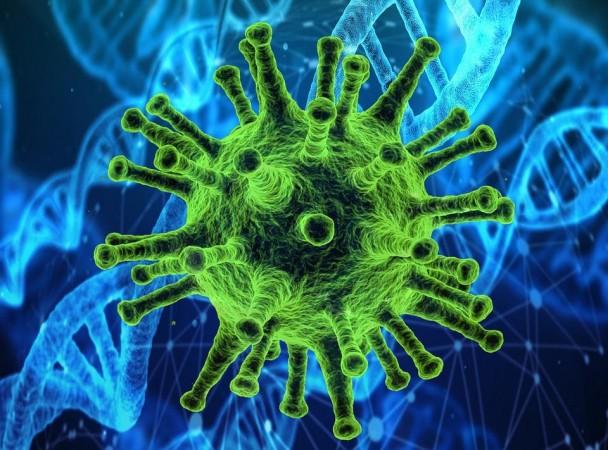The SARS-CoV-2 virus is evolving at a rate that is making it difficult for the scientific community to keep up with. Several variants—some more deadly than the original virus that arose in China—have emerged in the last 21 months of the COVID-19 pandemic.
Some are outright lethal, such as variants of concern (VOC). Others have the potential to become potent and are closely monitored and labeled variants of interest (VOI). This week, the WHO designated another variant as a VOI—Mu variant.
In its 'Weekly epidemiological update on COVID-19' published on 31 August 2021, the WHO announced the designation of the Mu variant (B.1.621) as a VOI. The statement said that the variant has mutations that suggest "potential properties of immune escape", indicating that the variant could evade immunity obtained through vaccination or previous infection.
So what is the Mu variant and what kind of mutations does it have? What can we expect from it? Let's take a look.
New Addition to List

A VOI is a variant that possesses specific genetic markers that are known to causes changes in its receptor binding, decreased neutralization by antibodies (acquired through vaccination or prior infection), reduced effect of treatments, and the potential increase in transmissibility and severity of the disease. Simply put, a VOI has the genetic requirements to become a VOC.
Excluding the MU variant, the WHO's current list of VOIs comprises four other variants— Eta (B.1.525- Multiple countries), Iota (B.1.526- the US), Kappa (B.1.617.1- India), and Lambda (C.37- Peru). All the above variants were first detected in the respective countries towards the end of 2020 and were designated VOIs by the WHO in the first half of 2021.
'A Constellation of Mutations'
The MU variant was first identified in Colombia in January 2021 and was designated a VOI on 30 August 2021. In its weekly update, the WHO stated that some periodic reports of MU-caused cases of COVID-19, and a few larger outbreaks, have been reported in other South American and European nations.

Nearly 40 countries have declared the detection of the VOI so far. While it has been labeled a VOI, the current global prevalence of cases by Mu is below 0.1 percent. However, its share has increased in Colombia (39 percent)and neighboring Ecuador (13 percent).
So what kind of alterations does Mu contains? "The Mu variant has a constellation of mutations that indicate potential properties of immune escape," the WHO said. The UN body further added that existing data on the variant points towards its potential to evade immune responses.
"Preliminary data presented to the Virus Evolution Working Group show a reduction in neutralization capacity of convalescent and vaccinee sera similar to that seen for the Beta variant, but this needs to be confirmed by further studies," it said.
Crucial Mutations on Spike

According to the Global Virus Network, Mu has several mutations: P681H, E484K, and K417N. These mutations are found on specific regions of the 'Spike' protein or 'S-protein' (a hook-like structure that the SARS-CoV-2 uses to enter cells). The location of mutations directly impacts the manner in which the spike interacts with cells and invades them. It is divided into two parts—the S1 subunit and the S2 subunit.
While the S1 subunit enables the binding with the ACE2 receptor, the S2 subunit mediates the fusion. The S1 subunit comprises of N-terminal domain (NTD) and a receptor-binding domain (RBD). Fusion peptide (FP), transmembrane (TM) domain, cytoplasmic domains (CD), and heptapeptide repeat sequence 1 (HR1) and heptapeptide repeat sequence 2 (HR2) form the S2 subunit. These individual regions consist of their own unique units known as residues.
Sharing Mutations with VOCs

While the full extent of the Mu variant's characteristic expression is yet to be gleaned, the nature of its mutations may offer some insights into the subject. P681H is present in a region known as the 'furin cleavage site' that is located at the boundary between the S1and S2 subunits. This particular mutation is found in the Alpha variant (B.1.1.7-UK) and is associated with improved transmissibility of the virus. The Alpha variant has also been tied to more severe outcomes in patients.
E484K is an 'escape mutation' that is present on the RBD of the spike. It decreases antibody neutralization and enables its escape from immune defenses. E484K was first identified in the Beta variant (B.1.351-South Africa) and has since been detected in other VOCs such as Alpha (a variation of it) and Gamma (P.1- Brazil).
Much like E484K, K417N can impede neutralization by antibodies and may help the spike bind better with the cell. It was detected in the Beta variant. More recently, it was identified in a sub-lineage of the Delta variant (B.1.617.2- India) called the Delta Plus variant. Again, it is present on the RBD of the spike.

The Delta variant is of specific concern as it has become a dominant strain in several countries; owing to its increased contagiousness in comparison to other strains. Like the Alpha variant, the Delta variant is also associated with the higher severity and is believed to have driven the second deadly wave of the pandemic in India.
However, the WHO emphasized that it is premature to speculate on what the nature of the Mu variant will be in its entirety. It also added that its simultaneous circulation with the Delta variant is of paramount importance for surveillance.
"More studies are required to understand the phenotypic and clinical characteristics of this variant. The epidemiology of the Mu variant in South America, particularly with the co-circulation of the Delta variant, will be monitored for changes," the WHO noted.













